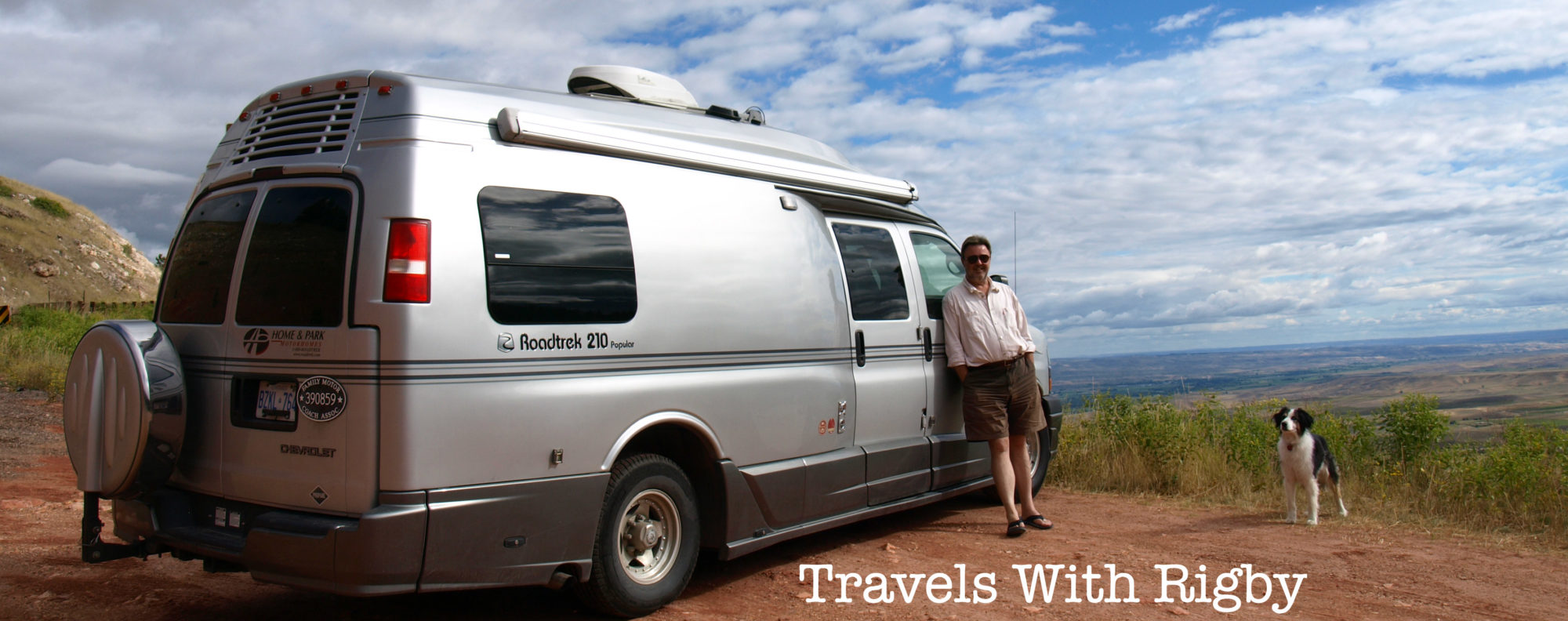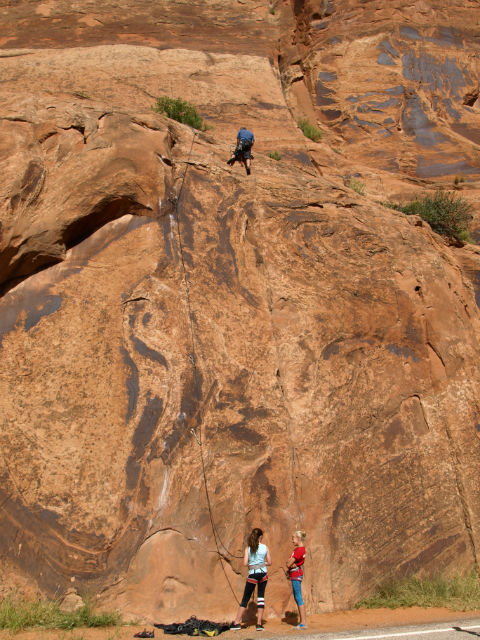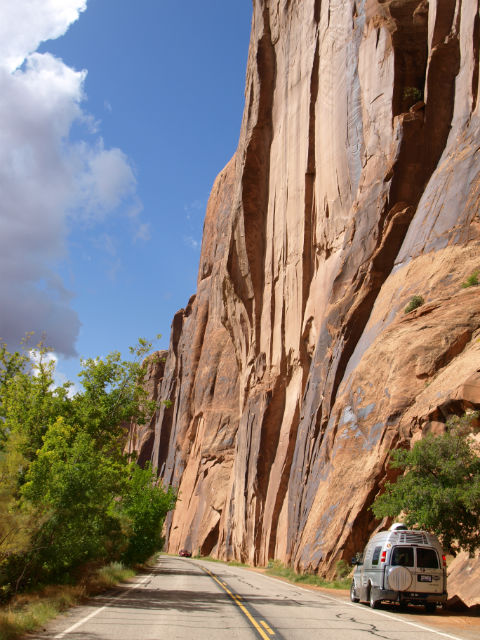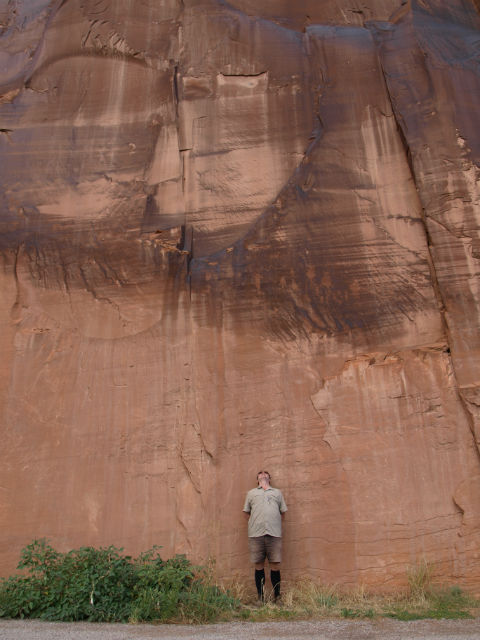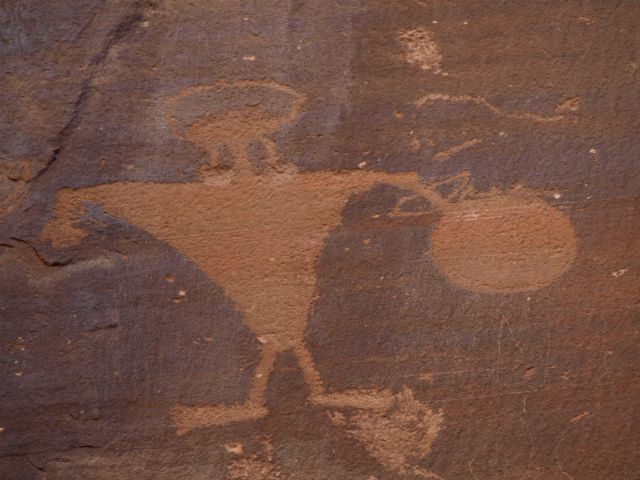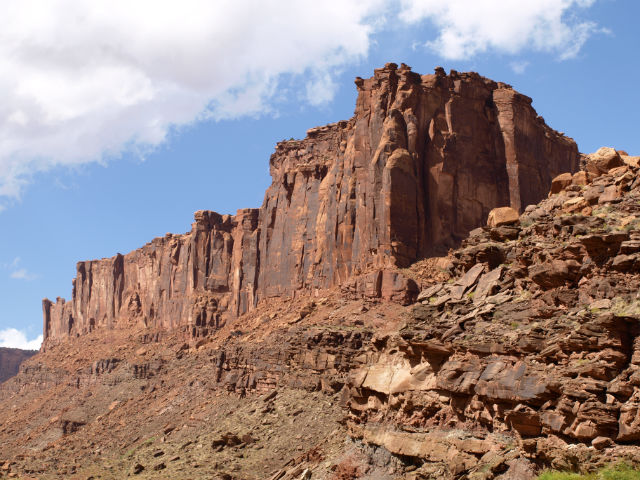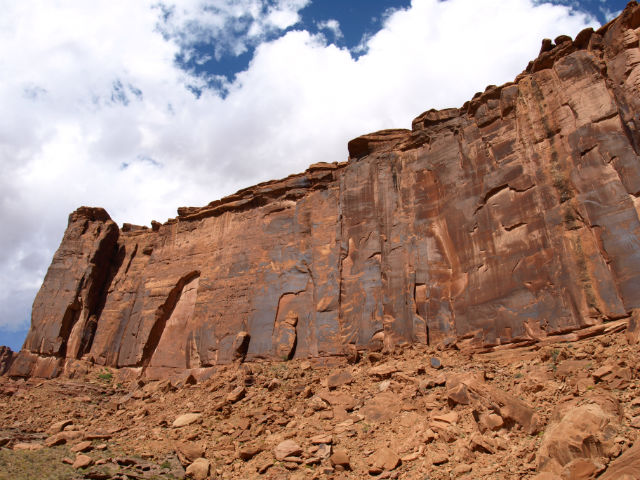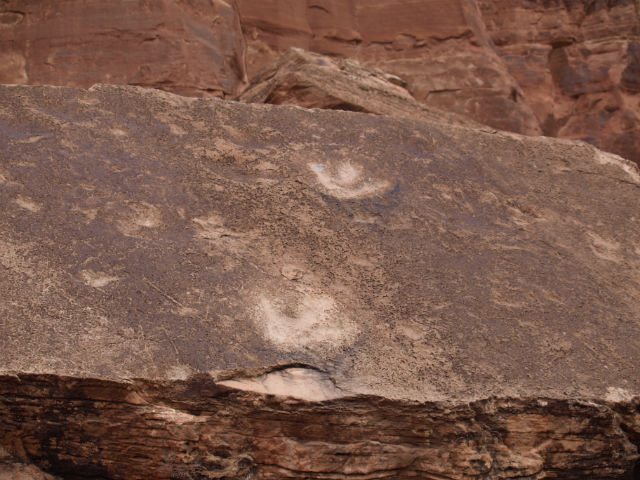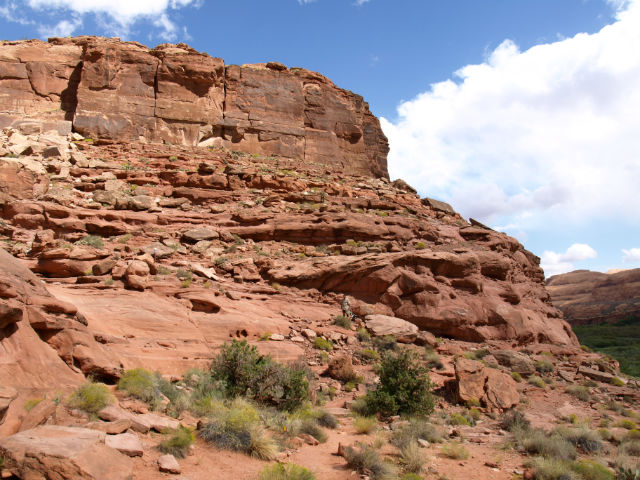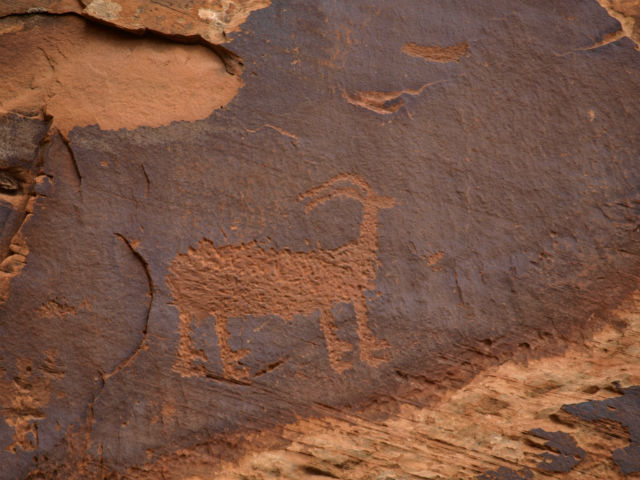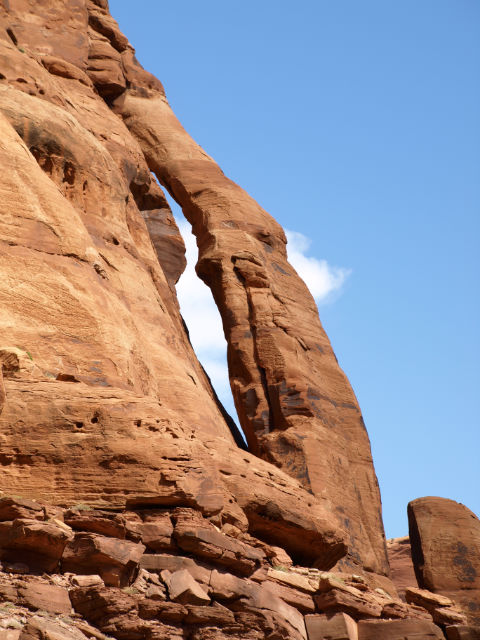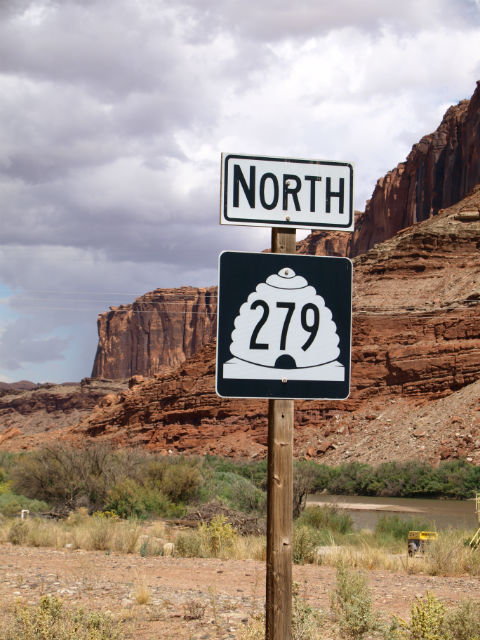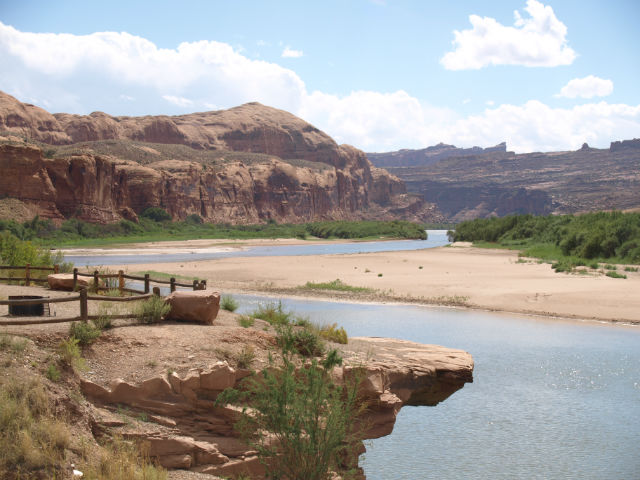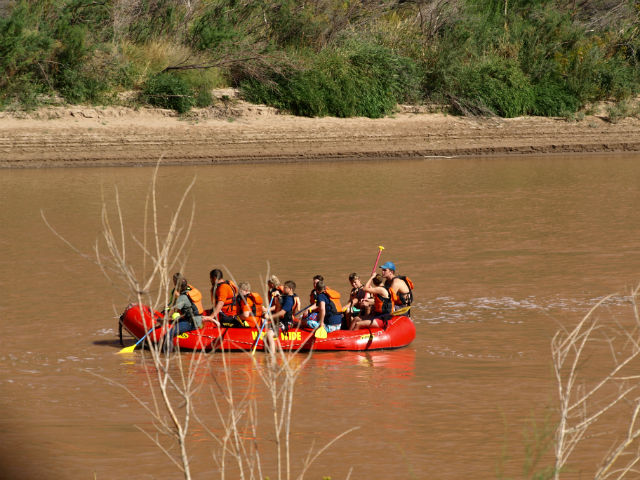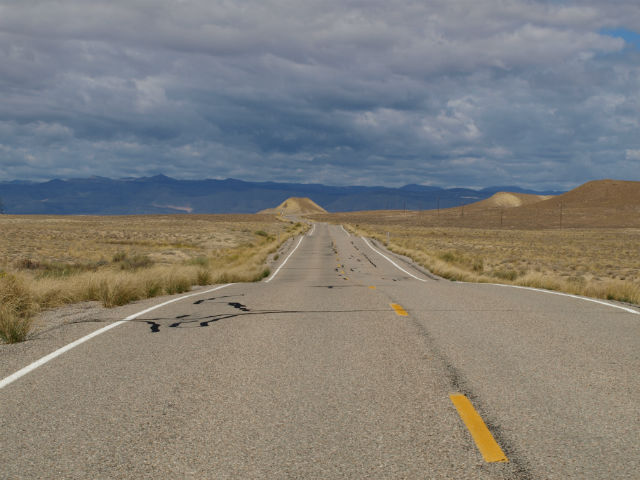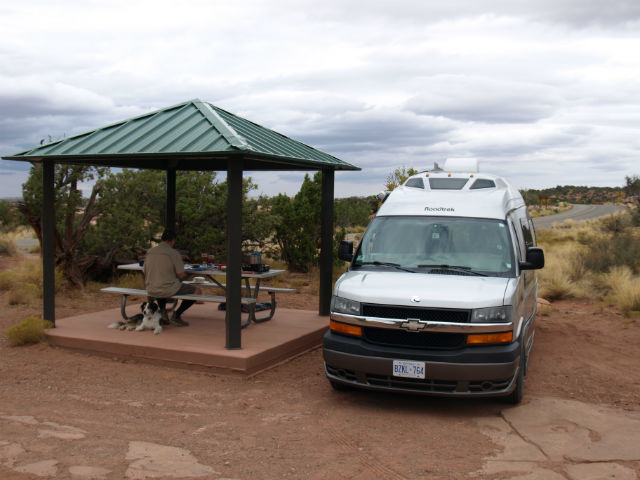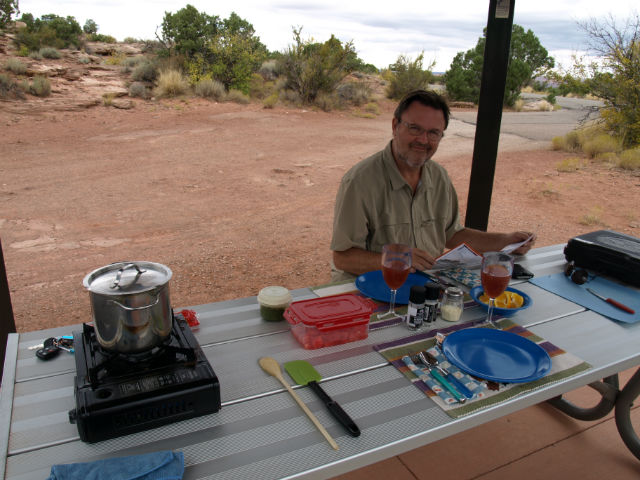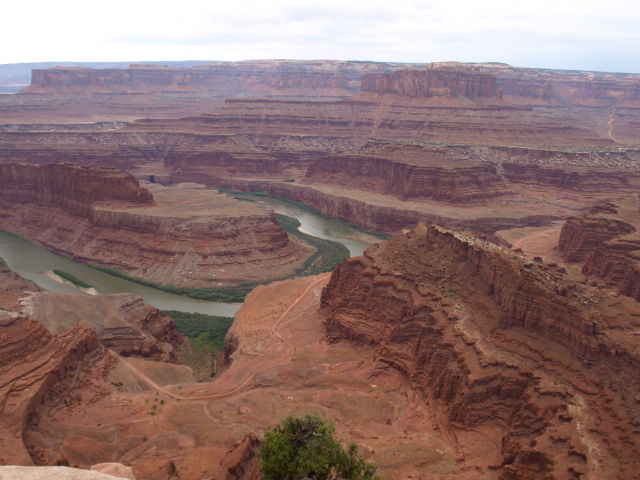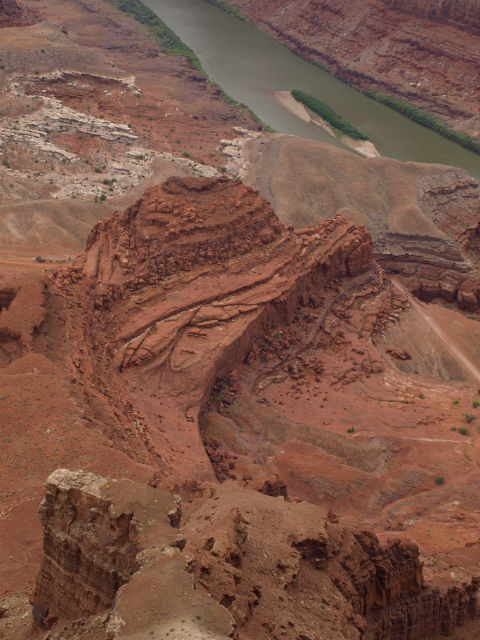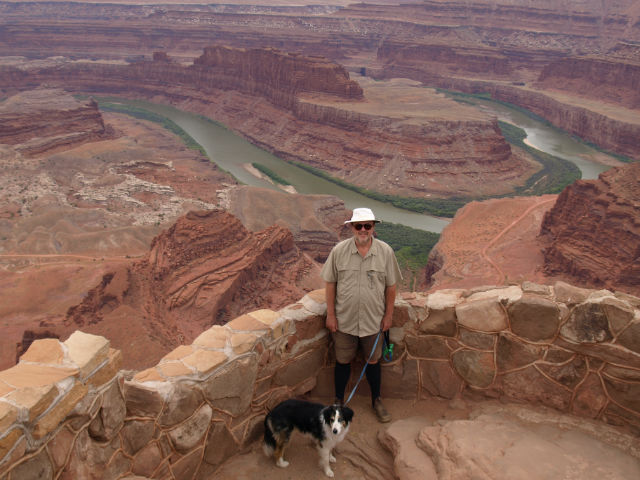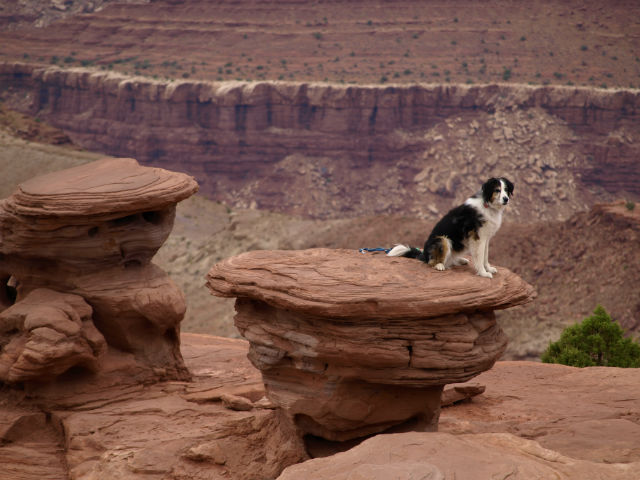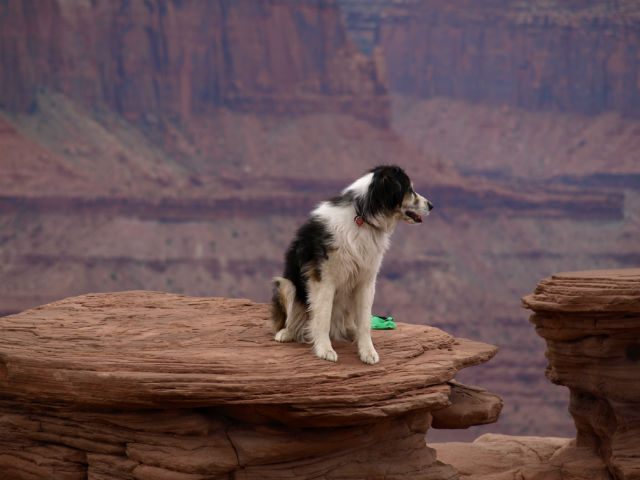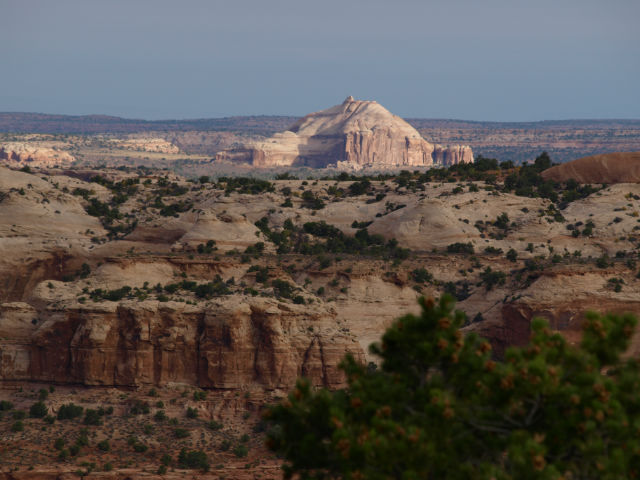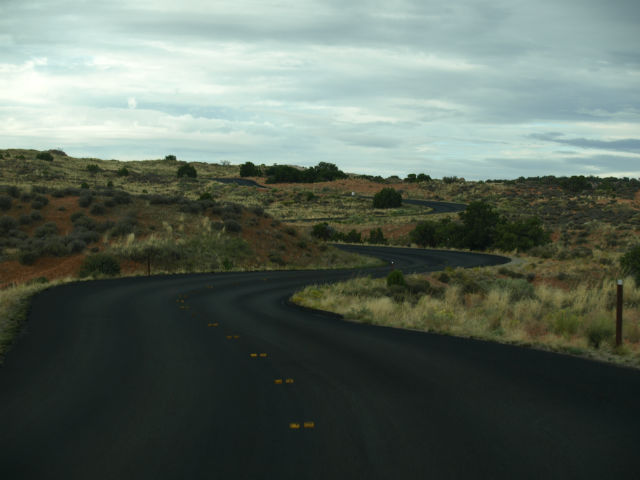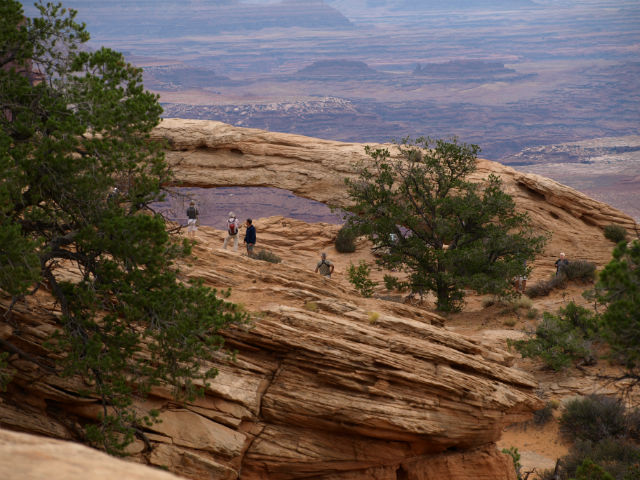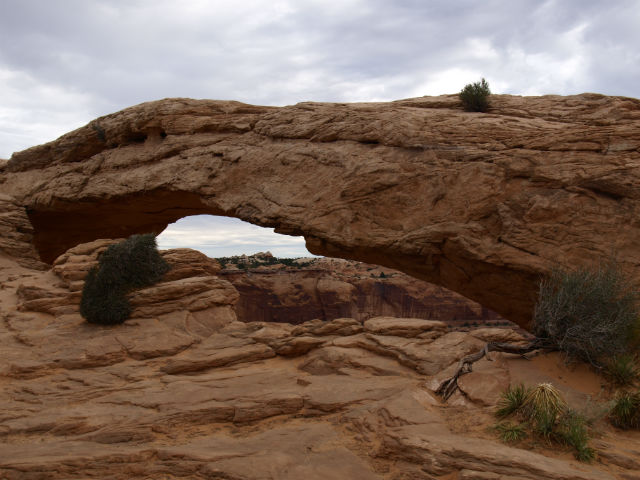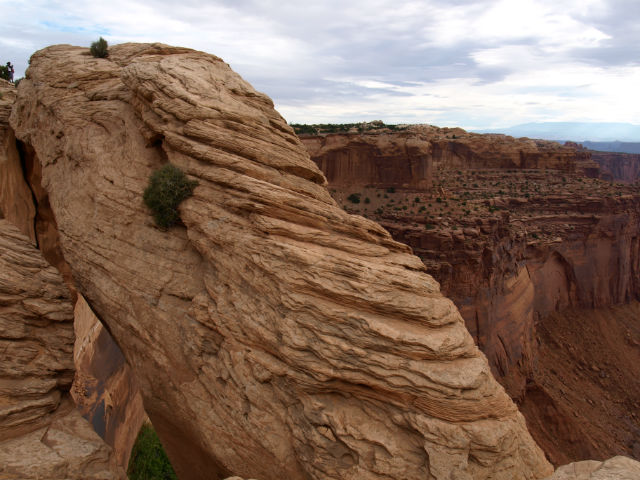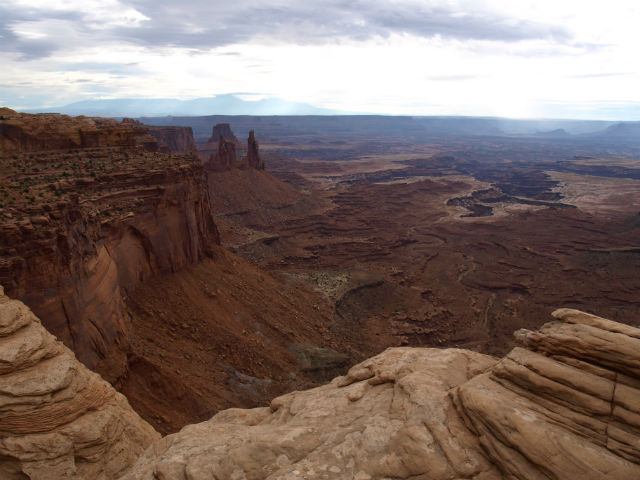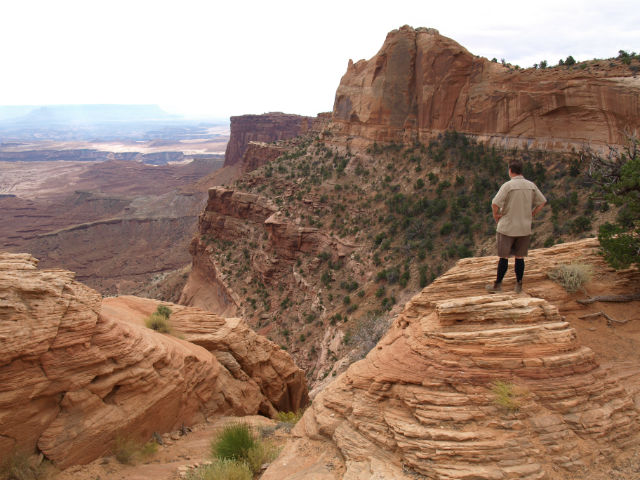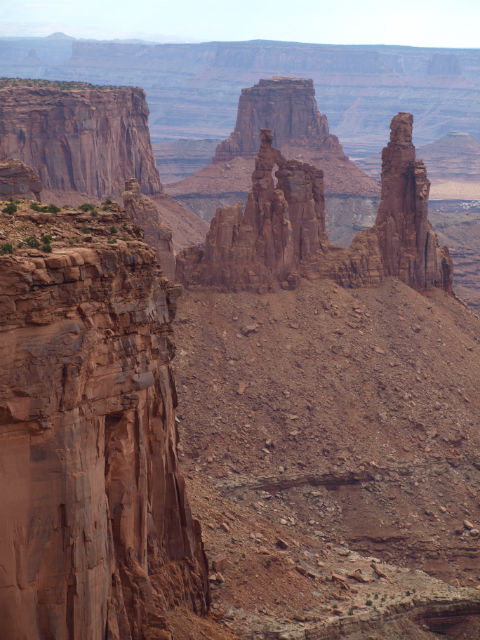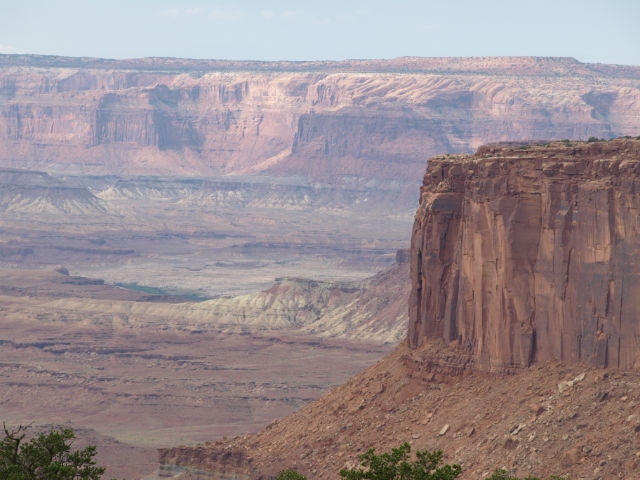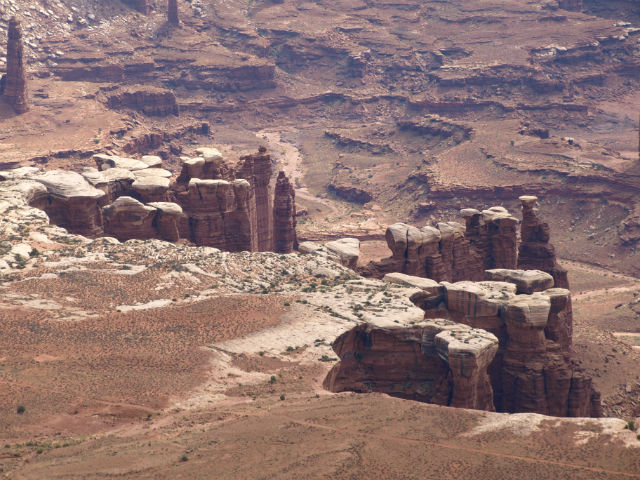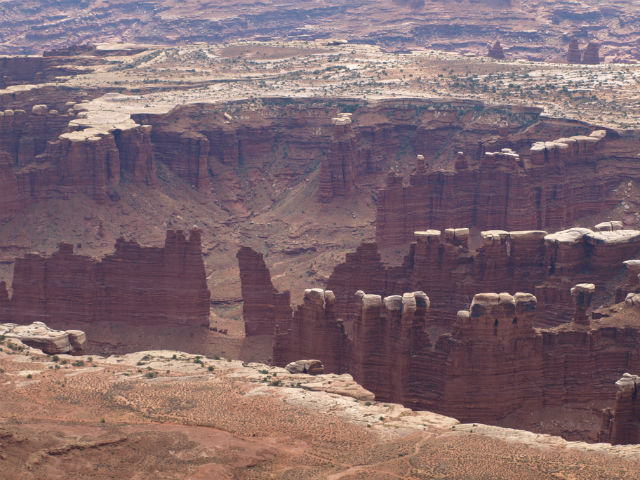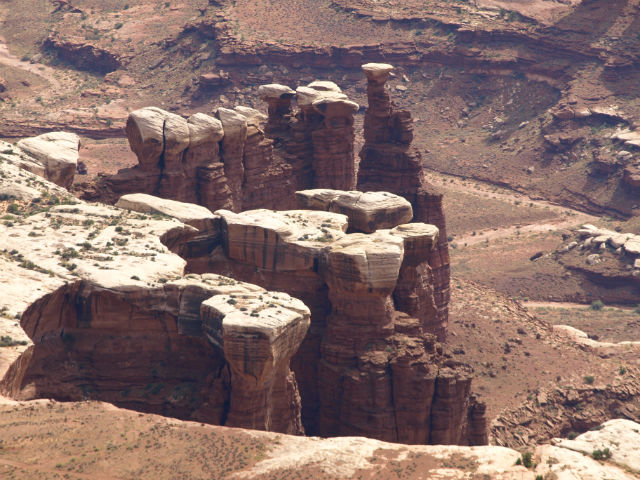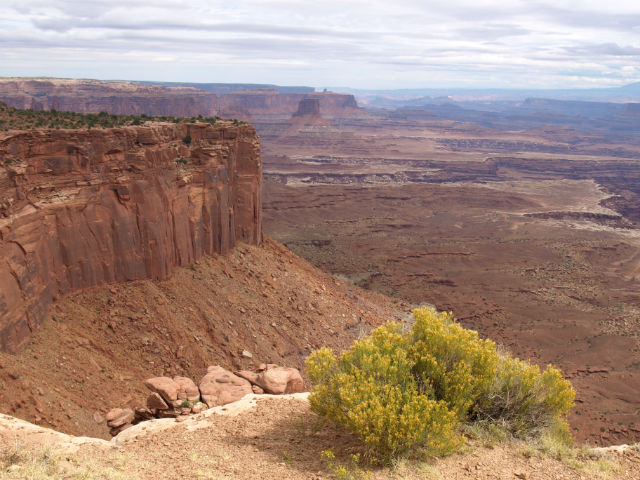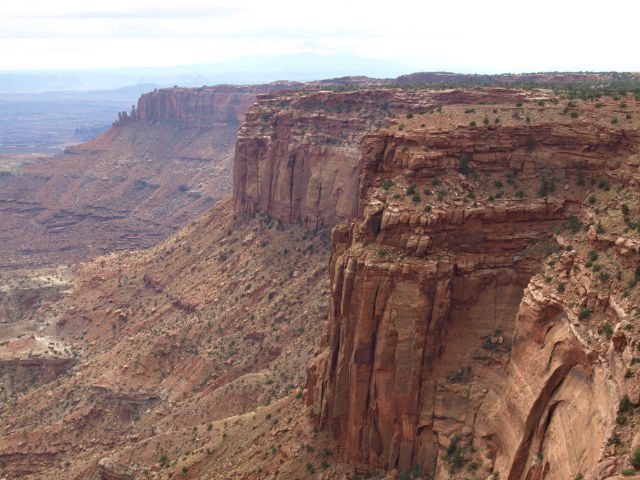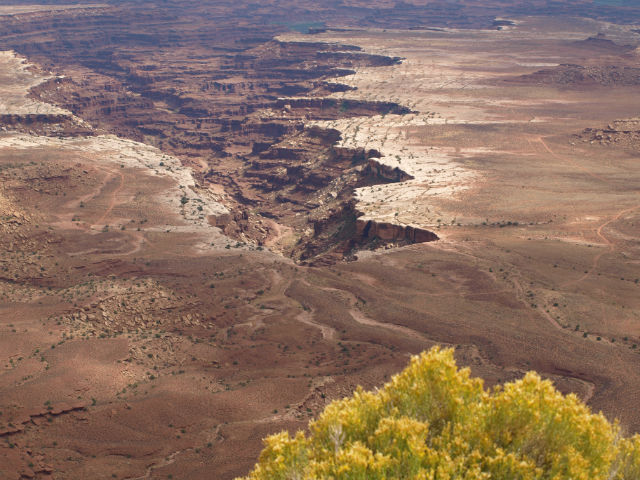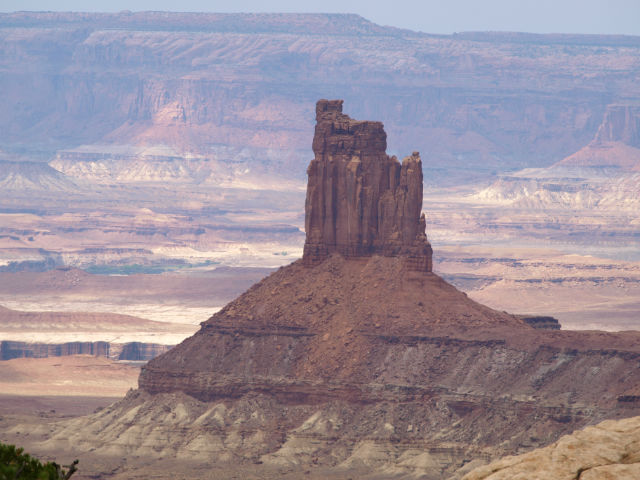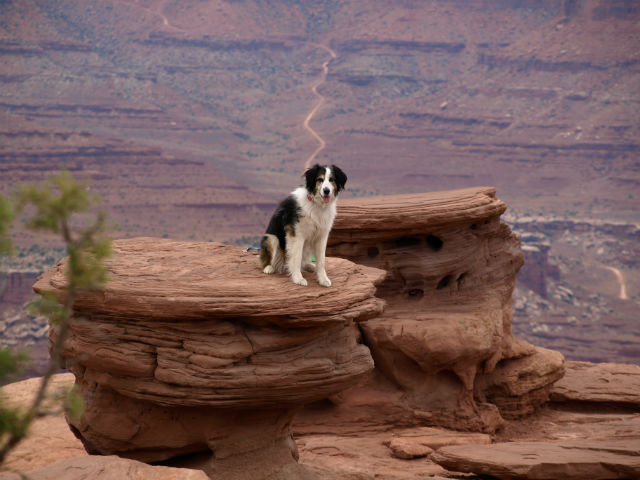Tag Archives: Moab
We found spots around Moab where there was … almost no one!
What really floors us about the area around Moab is how many visitors from out of state seem lasered on Arches National Park. We stopped a while at the Visitor Center along the I-70 interstate and listened in as one visitor after another asked only about Arches. We loved that particular park, but were just as enamoured with the other sites (some a bit more off the beaten path) that had no lineups, no crowds and, in some spots, almost no other people.
That’s how we spent this day. Exploring some of the lesser known routes and hiking trails.
We started with the road marked Scenic Byway 279, just 7km/4mi north of Moab. The narrow road is paved and snakes beside the Colorado River. It’s a one-way trip (at least for a camper van) and is miles of astounding scenery and scenic pullovers until it turns into a rougher dirt road that heads deep into the floor of the canyon. On our wish list for next time: a 4WD tour past this point.
Right from the start, we were treated to soaring red rock cliffs on our right hand side, a favourite spot for rock climbers. They seemed to be the only other ones using this roadway.
There are pullouts along 279 to look at the Indian rock art and one great hike up to three-toed dinosaur tracks preserved in a flat slab of rock. It was a short climb up to get a very close look at the fossilized tracks. Amazing to see these and we wondered how many more fossilized remains must be caught in the miles and miles and layers of these remote red rock canyons.
We try to make sure we get out from the van and do a little hiking every day. We found the perfect spot at the pullout for Jug Handle Arch (another of the Moab area’s trademark arch formations). We had the place to ourselves, walked into the canyon, an area of Bighorn Sheep and cathedral-like red rocks that seem to vault up all around.
The next day we left Moab (and Utah) heading for Colorado and took the more backroads route, Scenic Byway 128 which also tracks the Colorado River, this time upstream. Highways 279 and 128 both follow the mighty river, and we saw many pretty BLM campgrounds, right on the riverbanks. These sites would be around $15USD/night, have few facilities, but the settings can’t be beat. They are on our list for the next time we are through.
It’s a great route for biking with a dedicated paved riding trail along a long stretch, rafting (also on our list for next time – can’t believe we missed it this time around!), birding and just a scenic drive. Heading east, the landscape changed dramatically (which has made route 279 a favourite for movie shoot locations): from the tall red cliffs that are the backside of Arches National Park, to spires, buttes and pinnacles, to rubble-like moraine to wide open high plains. We drove past the abandoned community of Cisco, which was once part of a robust mining economy and later a film site for Thelma & Louise.
Sad to say goodbye to Utah. Excited about exploring Colorado.
We’ve posted all sorts of photos here.
Canyonlands & Dead Horse — Photos
Rocks are so much more interesting than Brangelina!
This part of Utah – here at Utah’s Canyonlands – is what writer and environmentalist Edward Abbey called the “most arid, most hostile, most lonesome, most grim, bleak, barren, desolate and savage quarter of the state of Utah – the best part by far.”
It was another early alarm clock day as we set off for both Canyonlands National Park and neighbouring Dead Horse State Park, about a 35-minute drive from our campground in Moab. We wanted to beat any crowds and be there as close to sunrise as possible.
We pulled into the park before the Visitor Center was even open, so set up and cooked breakfast. We love this about the Roadtrek – we can cook, eat, clean up (and take short naps) ANYWHERE. The flexibility of the lifestyle is irresistible.
After brekkie, we watched the excellent short film at the Canyonlands Visitor Center, just to get an idea of what was ahead. We’ve been finding that the park intro films give us just the right amount of background about geology, wildlife, etc. to really help us appreciate our visit.
While the roads and trails at Arches National Park wove between dramatic red rock formations, Canyonlands is more about never-ending vistas and the expansive canyons in this part of the Colorado Plateau. Millions of years ago, this was an area of shallow seas, sedimentation, and uplift forming the current landscape when great blocks of rock fractured and were eroded into needles, spires and arches.
We were at one of the highlights – Mesa Arch – well before the crowds got there. That being said, Canyonlands has many fewer visitors than Arches, so there was nothing like a lineup of cars at the entry gates. In the final tally, it’s the remoteness of today’s two parks that would make them our top picks in the area.
We drove all the scenic drives, got out and took hundreds of photos, did a few hikes (the short Mesa Arch loop trail and the trail at Upheaval Dome as well as rim trails at most of the lookouts). The national parks are not particularly dog friendly – dogs are only allowed in parking lots and certain paved areas, so our hiking time was pretty limited.
From the pullouts and trails we could see the great, wide river canyons and the meandering, wide green water of the Colorado River. Canyonlands is the confluence of the Green River and the Colorado River. The area was largely unmapped until the expeditions of John Wesley Powell in the 1860s – the same explorer who mapped Grand Canyon.
We found ourselves comparing Canyonlands to Grand Canyon. In some ways, Canyonlands seems more “relatable”: They are similar in geology, but the canyons here are much wider and more expansive (not as deep though). Next time we come here we’ll put aside a full fay to take one of the jeep tours along the very bottom of the canyons – we could see a few at a distance, navigating the dirt roads. Seeing the canyons from the “bottom up” would be very cool.
Not far down the road from Canyonlands, we stopped at Dead Horse State Park. The view from the overlook at Dead Horse Point – of the gooseneck turn in the Colorado River – is on almost every Utah Tourism brochure. It’s also close to the spot where Thelma and Louise took that famous last ride over the cliff edge.
Dead Horse is like a long peninsula rising above the canyon far below. It’s said that in the late 1800s, cowboys would herd wild mustangs to Dead Horse Point, then lay brush and branches across the narrowest point called the Neck, essentially creating a natural corral.
The sun was setting and we decided we wanted to spend the night in this beautiful, remote spot. The park campgrounds were full, but we tried a dirt side road and found a very nice, small BLM site called Horsethief just north of the state park. Our hope was that the skies would clear and we’d be able to appreciate the pitch black and why Dead Horse and Canyonlands have both been designated as International Dark Sky Parks. Not so lucky . . . soon after we pulled in a light rain started to fall. No stars, but the high desert after a light rain smells so very special. Clean, renewed with hints of pinyon-pine and juniper.
Edward Abbey’s book, Desert Solitaire, is an environmentalist’s classic – a great read. It’s on our bookshelf at home but, oddly enough, the public library in Kingston doesn’t have it in its collection. Ditto for his other well-known book, The Monkey Wrench Gang. They both deserve much more ink and spotlight than the current Brangelina meltdown!
